Sneak peeks: Adobe’s 2020 R&D projects for 3D graphics
Adobe has previewed some of the 3D graphics projects in development at Adobe Research, the company’s R&D division, from a semi-automatic 3D modelling system to a new real-time physically based renderer.
The firm hasn’t announced release dates for any of the projects, or even which of its applications they will form part of, but they give an indication of where the company is headed with its product development.
The sneak peeks were shown during yesterday’s livestream on new features in Adobe’s Substance Suite of tools, alongside Substance Designer 2020.2 and a new IBL creation system for Substance Alchemist.
The R&D previews themselves start at 00:49:00 in the video above.
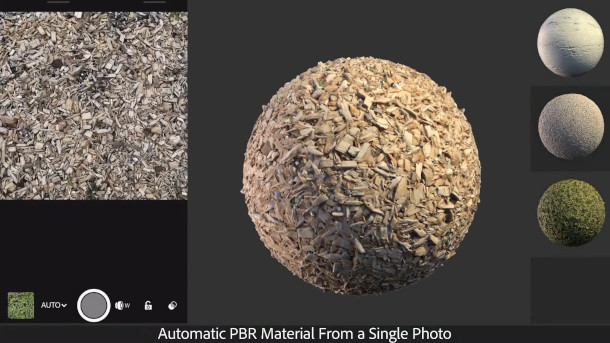
Material creation: convert a single source image to a PBR material
Of all of the research on show, the most familiar was a new system for generating a PBR material automatically from a single photographic source image.
Similar functionality was added to Substance Alchemist earlier this year, in the shape of the new Image to Material filter added in Substance Alchemist 2020.2.
The underlying algorithm was trained on real-world source images using machine-learning techniques, and automatically generates accurate normal and displacement maps from single source photos.
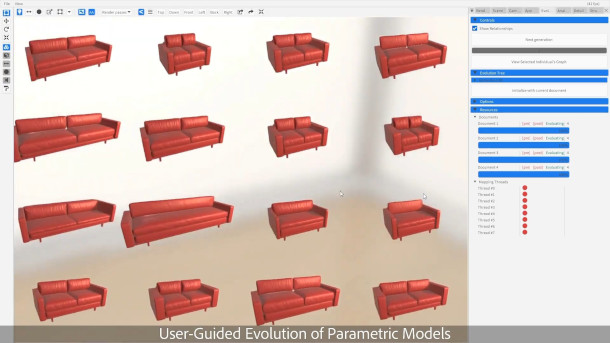
Modelling: design 3D projects without having to edit the model directly
Other R&D projects on show included a new user-guided 3D shape modeling system: in the video, it seems to be a standalone application called Structure.
The video shows the software generating procedural variants of 3D objects like sofas, changing high-level parameters like overall width and the number of seat cushions.
The user can select the version they like most, then use it as the seed for a new ‘generation’ of variants, progressively honing in on a final design without ever having to edit the model directly.
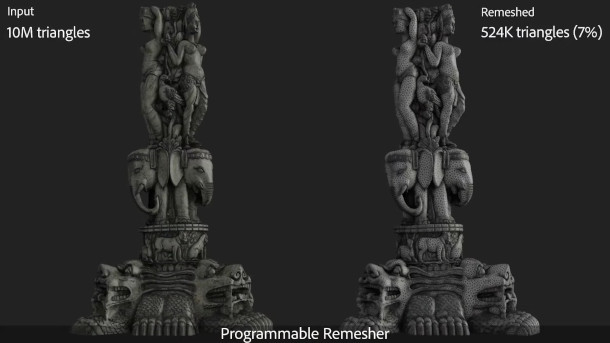
Retopology: convert raw geometry to even all-tri and all-quad meshes
The video also showed a new “programmable remesher” reducing dense source geometry to even tris: one slide showed a 10-million-poly source being decimated to 524,000 triangles.
The technology could be used to reduce poly count of raw scan data to levels usable in production.
Adobe also said that a similar system was in development for generating all-quad meshes, which would have potential applications for retopologising character models for animation.
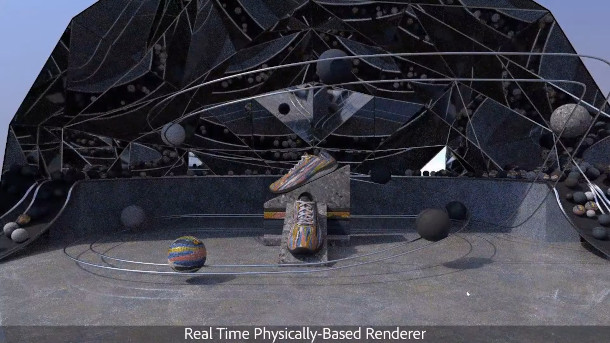
Rendering: new real-time physically based renderer and rendering to vector graphics
Rendering technologies on display included a new real-time physically based renderer, shown generating a progressive preview of the 3D environment above.
The preview is grainy, and not fully photorealistic, but the test scene is pretty crazy, with multiple angled mirrors generating layer upon layer of nested reflections.
A separate demo showed rendering to vector graphics.
Of all of the projects featured, it was the most specific to Adobe’s current applications, with a 3D model in Dimension being rendered as a vector outline to which custom stroke style was applied in Illustrator.
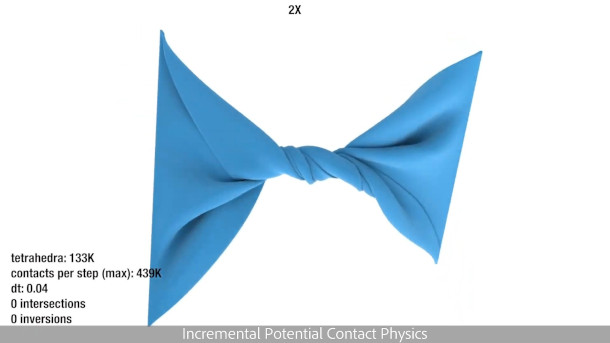
Physics: new Incremental Potentical Contact method simulates squichy solids
But perhaps the most unexpected tech demo was one of a new physics system, based on the paper Incremental Potential Contact: Intersection- and Inversion-free, Large-Deformation Dynamics.
The new Incremental Potential Contact (IPC) method solves nonlinear elastodynamics in a computationally efficient way, accurately mimicking the behaviour of real-world materials from cloth to rubber.
Read more about Adobe’s latest 3D graphics R&D projects on the Adobe Research website
